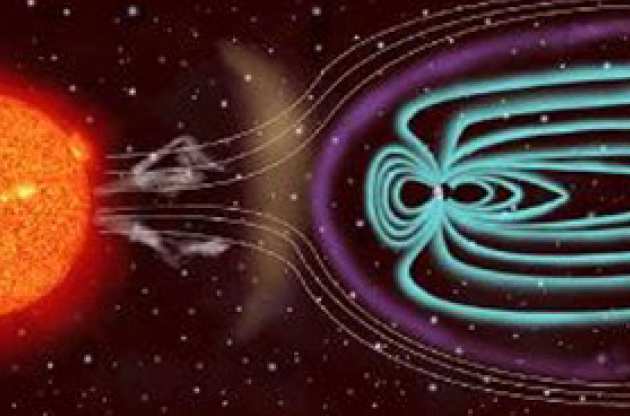 In 1963 the concept of an open magnetosphere was put forward by Jim Dungey of Imperial College; the model explained in a fairly radical way the coupling of solar wind and magnetosphere. The Space and Atmospheric Group has been in the forefront of the field since then. Building on that reputation in magnetospheric physics, the group has established a leading international reputation in the physics of the outer magnetosphere, including the cusp regions, the magnetosheath, the bow shock, and foreshock which form the sequence of layers and boundaries that protect the sunward side of the Earth from the solar wind. Another branch of the group's interest is in the interplanetary medium, including the 3D heliosphere and various interplanetary phenomena (e.g., shocks and discontinuities, turbulence, interplanetary coronal mass ejections). Some of that work is described in accompanying pages on Heliospheric Physics.
In 1963 the concept of an open magnetosphere was put forward by Jim Dungey of Imperial College; the model explained in a fairly radical way the coupling of solar wind and magnetosphere. The Space and Atmospheric Group has been in the forefront of the field since then. Building on that reputation in magnetospheric physics, the group has established a leading international reputation in the physics of the outer magnetosphere, including the cusp regions, the magnetosheath, the bow shock, and foreshock which form the sequence of layers and boundaries that protect the sunward side of the Earth from the solar wind. Another branch of the group's interest is in the interplanetary medium, including the 3D heliosphere and various interplanetary phenomena (e.g., shocks and discontinuities, turbulence, interplanetary coronal mass ejections). Some of that work is described in accompanying pages on Heliospheric Physics.
Nearly all of the group's research in Solar Terrestrial Physics exploits satellite datasets taken by missions on which we have active participation, in many cases as Principal Investigator for the magnetic field experiments but also on others for which we are Co-Investigators on a whole range of fields and particle experiments.
We are playing a major role in the four-spacecraft Cluster mission by leading the magnetic field investigation. The four spacecraft were launched in July and August 2000. The group has led many of the mission's many revolutions in our understanding of the outer magnetosphere, including studies of the outer magnetospheric cusps and the structure and dynamics of the Earth's bow shock - a paradigm for collisionless shocks believed to be responsible for particle acceleration and flow dynamics in many astrophysical environments. Our Cluster research has also included ground-breaking studies of the well-developed solar wind turbulence and its anisotropies relative to the local magnetic field.
Our role in Cluster includes the lead of the Cluster Science Centre, that provides software and data services to the wider community. That activity is described separately on the Cluster Science Centre webpage. Those data services have led to involvement in the Themis mission, which is in a highly complementary orbit to that of Cluster and thus provides exciting opportunities for joint research.
We also have expertise and ongoing research efforts in understanding the release of energy through magnetic reconnection in the Earth's geomagnetic tail. Such releases power the aurorae and are responsible for technological and biological hazards of "space weather." Our participation in the ground-breaking CINEMA/TRIO Cubesat mission will investigate manifestations of space-weather driven phenomena in Low Earth Orbit while demonstrating the capabilities of these nano-satellites for fundamental high quality scientific research.
The Group also leads investigations on the Rosetta Mission, which will study the solar wind interaction of Comet 67P/C-Gin 2014. Rosetta will rendezvous with the comet and accompany it as it approaches the Sun and becomes more active.
Looking to the future, the group is preparing for several important missions, notably Solar Orbiter for which we have been selected as Principal Investigator for the magnetic field instrument.
Current research topics include:
- Hot Flow Anomalies and other phenomena at collisionless shocks
- Electron heating at the Earth's bow shock and within the magnetosheath
- Solar wind turbulence
- Magnetic reconnection
Personnel
Senior personnel associated with Solar Terrestrial Physics within the Group include: